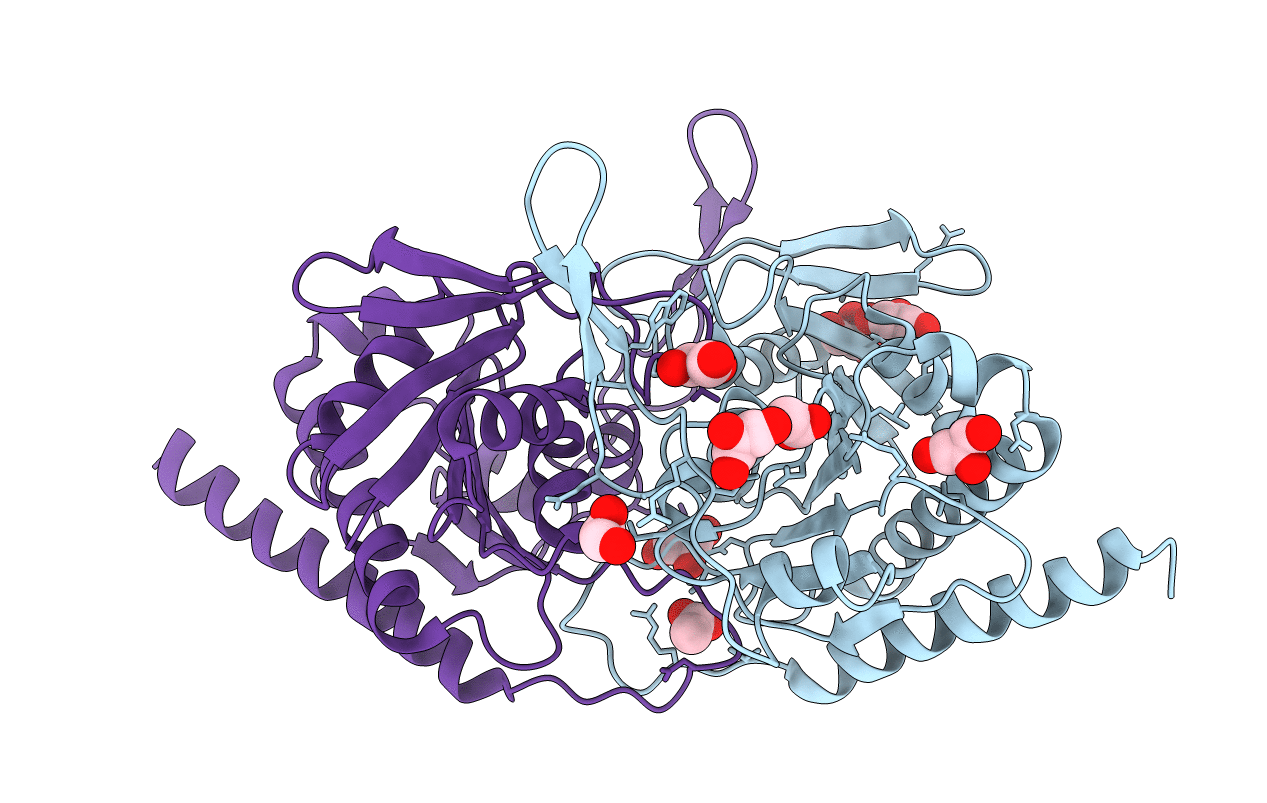
Deposition Date
2002-03-08
Release Date
2003-02-25
Last Version Date
2024-10-30
Entry Detail
PDB ID:
1L5X
Keywords:
Title:
The 2.0-Angstrom resolution crystal structure of a survival protein E (SurE) homolog from Pyrobaculum aerophilum
Biological Source:
Source Organism:
Pyrobaculum aerophilum (Taxon ID: 13773)
Host Organism:
Method Details:
Experimental Method:
Resolution:
2.00 Å
R-Value Free:
0.22
R-Value Work:
0.18
Space Group:
P 31 2 1


